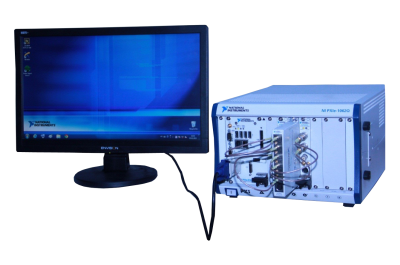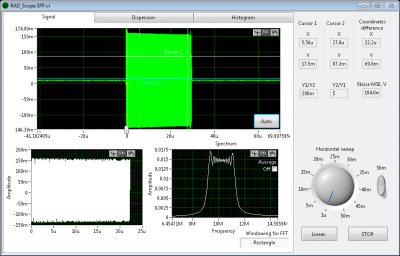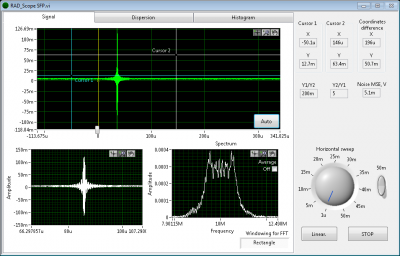Radar Signals Laboratory Manual

Description
The Radar signals laboratory has been developed as a tool for hands-on study of digital specialized processors (SP) for detecting and determining the angular position of the target in surveillance radars, using the incoherent sequence of radio pulses as a probing signal.
The laboratory has been designed to demonstrate the possibility of designing and developing a multi-channel radar system, using a specialized processor, and for the introduction of time and amplitude sampling devices. One of the most difficult assignments in radar construction is the selection of the probing signal. The tactical characteristics of the radar (namely: the operation and resolution range, measurement accuracy, the structure and main characteristics of the transmitting and receiving tract, as well as the radar security level, its weight, dimensions and price) all depend on the probing signal.
Features
- Device for forming and matched filtering of chirped pulse signals
- Device for forming and matched filtering of pulse signals with pseudorandom phase manipulation
- Device for forming and correlation processing of pulse signals with pseudorandom phase-manipulation
- Digital device for detection of the pack of coherent pulses on the background of passive interference
- Specialized processor for digital quasi-optimal processing of incoherent pulse signal packs
- Specialized processor for digital processing of the pack of incoherent radio pulses with stabilization of false alarm probability with the help of the modified signed detector
Technical Specifications
| During the lab theoretically and experimentally will be studied the following characteristics: | |
| Laboratory work № 1 |
|
| Laboratory work № 2 |
|
| Laboratory work № 3 |
|
| Laboratory work № 4 |
|
| Laboratory work № 5 |
|
| Laboratory work № 6 |
|



